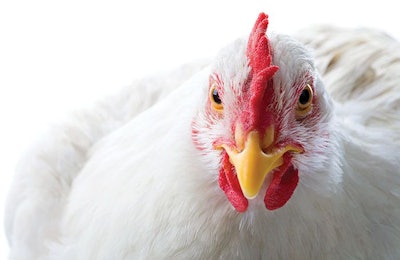
From mid-May, farmers of poultry, pigs and other livestock will have the chance to join the newly formed Livestock Poultry Raiser Agricultural Cooperative (LPRAC). Among the benefits on offer to its members will be services and incentives, according to the Philippine News Agency (PNA).
At the forthcoming meeting, farmers who join the newly formed LPRAC will also be offered training. In addition, they will be able to elect officers to guide the organization.
With recent approval for its creation by the country’s Cooperative Development Authority, LPRAC is a public-private partnership. It was set up by the City Veterinary Office (CVO).
According to the CVO's Dr. Emmanuel Estipona, this is the first opportunity for the region’s producers to join such a cooperative. Among its key roles for the poultry sector will be to sustain the Range and Organic System and Alternative Livelihood (ROSAL) program. Under ROSAL, farmers have the opportunity to gain additional income by rearing their own chicks, and selling any surplus. In combination with this program, LPRAC will encourage farmers into organic production, as well as marketing their products.
According to Estipona, the Department of Agriculture has undertaken to set up multipliers in the area to increase the number of chicks available for organic production. Furthermore, PNA reports that the addition of a plant for dressing poultry offered by the Department of Agriculture will help to reduce the time to market for new organic poultry products.
Legazpi City is located in the province of Albay, which is in the Bicol Region in the south of the island of Luzon.
Chicken meat production in the Philippines
In 2020, the country’s chicken production totaled 1.81 million metric tons. According to the Chicken Production Report from the Philippine Statistics Authority (PSA), this was a 6.1% lower year-on-year, following two years of rising output.
No explanation is given for this reversal in trend, but outbreaks of highly pathogenic avian influenza (HPAI) were reported in the Philippines in 2020. However, earlier this year, the national veterinary authority declared the country HPAI-free.
During 2020, the country’s top 3 chicken-producing provinces were all in the Central Luzon Region, according to the PSA. This region lies further north on the island than Albay, and the Bicol Region to which it belongs. With output of more than 185,000 metric tons (mt), the leading chicken province is Bulacan.
At 75.91 pesos (PHP; US$1.57) per kilo, average farm-gate price for chicken was more than 6% lower in 2020 than the previous year. In contrast, the retail price for a fully dressed broiler chicken was almost unchanged at PHP155.35 per kilo.
Provincial, regional variation in chicken output
One province accounts for around 152,000mt of the nation’s total production, and that is Batangas (Calabarzon region). According to the PSA, this is followed by Pampanga (Central Luzon; 69,700mt), and Cebu (Central Visayas; 46,000mt).
Bicol Region — where Legazpi city is located — suffered the greatest year-on-year reduction in chicken meat output in 2020, according to this report. Producing a total of just under 46,300mt liveweight last year, the region supplies just 2.6% of the nation’s total chicken output. This output presented a reduction of 15.7% from the region’s 2019 volume.
Within Bicol, the regional contraction was largely the result of contraction in chicken meat output of 20% in the province of Camarines Sur, and 36% in Sorsogon. Meanwhile, the chicken sector in Albay has grown over the past three years to reach 9,253mt in 2020.
Philippines imports of chicken meat
In 2020, the Philippines imported 6.3% less chicken meat than the previous year — at around 318,400mt, according to the PSA. In terms of value, imports were down by 5.3% at US$311.6 million.
The USDA Foreign Agricultural Service (FAS) put the Philippines’ chicken imports at just over 374,000mt for the period January-November 2020. According to this source, by far the largest product by volume was deboned chicken at 253,700mt. With trade of almost 184,000mt, the European Union was the top supplier to the Philippines over that period.
With a total of just 624mt, imports of whole chickens are low. FAS attributes this to the Philippine authority’s refusal to accept sanitary-phytosanitary import clearance applications from importers of whole birds. This policy aims to protect local producers, according to FAS.

















